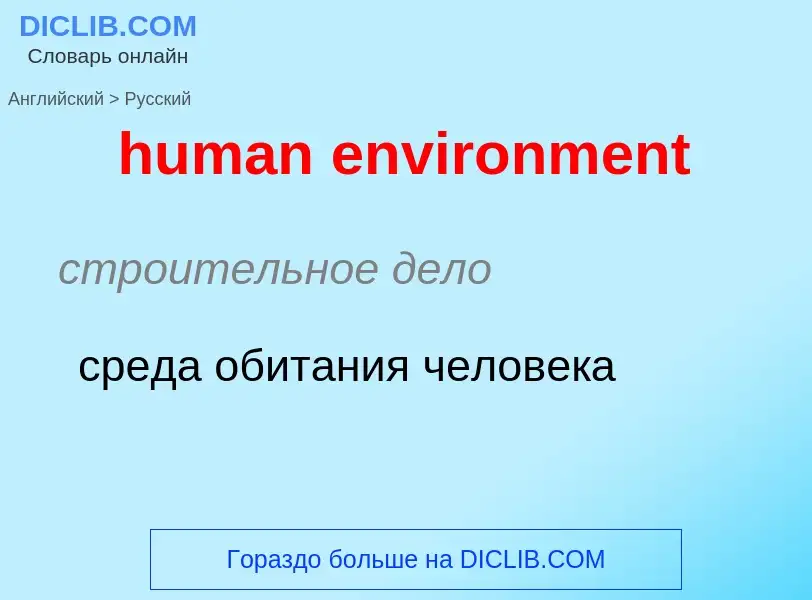Translation and analysis of words by ChatGPT artificial intelligence
On this page you can get a detailed analysis of a word or phrase, produced by the best artificial intelligence technology to date:
- how the word is used
- frequency of use
- it is used more often in oral or written speech
- word translation options
- usage examples (several phrases with translation)
- etymology
human environment - translation to russian
строительное дело
среда обитания человека
Definition
Wikipedia
A coupled human–environment system (known also as a coupled human and natural system, or CHANS) characterizes the dynamical two-way interactions between human systems (e.g., economic, social) and natural (e.g., hydrologic, atmospheric, biological, geological) systems. This coupling expresses the idea that the evolution of humans and environmental systems may no longer be treated as individual isolated systems. Some examples of coupled systems can be read here in the section "Socioeconomic Drivers":Environmental factor#Socioeconomic Drivers
As CHANS research is relatively new, it has not yet matured into a coherent field. Some research programs draw from, and build on, the perspectives developed in trans-disciplinary fields such as human ecology, ecological anthropology, environmental geography, economics, as well as others. In contrast, other research programs aim to develop a more quantitative theoretic framework focusing on the development of analytical and numerical models, by building on theoretical advances in complex adaptive systems, complexity economics, dynamical systems theory, and the earth sciences. To some extent, all CHANS programs recognize the need to move beyond traditional research methods developed in the social and natural sciences, as these are not sufficient to quantify the highly nonlinear dynamics often present in CHANS. Some research into CHANS emulates the more traditional research programs that tended to separate the social from the ecological sciences.

